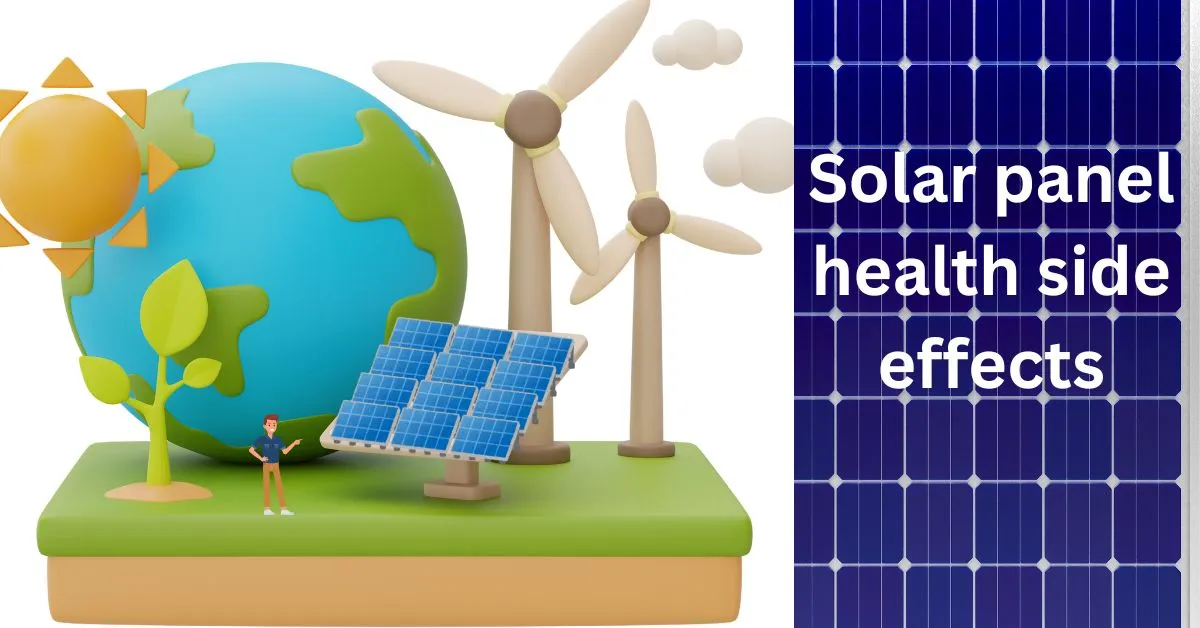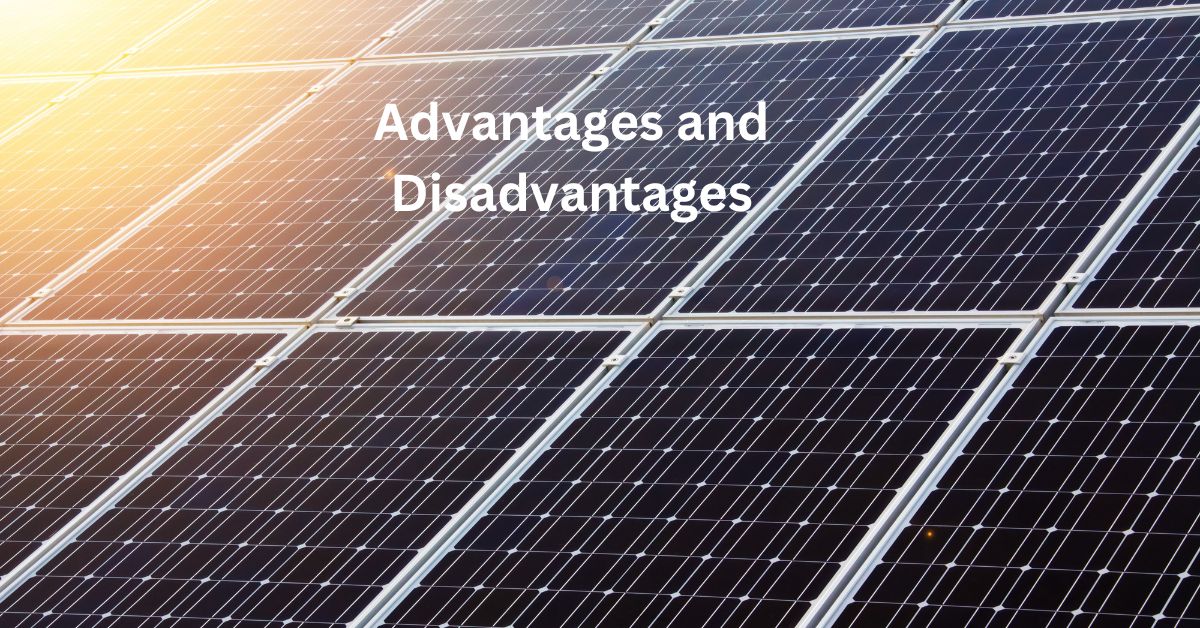Solar panels are famous for sustainable energy. They use sunlight to make electricity. More homes and businesses are adopting solar technology. But worries about health effects have also emerged.
1: Radiation Emission and Safety
What is radiation from solar panels?
Solar panels emit several types of electromagnetic radiation. These include ultraviolet (UV), infrared (IR), and electromagnetic fields (EMFs).
1. Ultraviolet (UV) radiation
Ultraviolet radiation is electromagnetic radiation. It has wavelengths shorter than visible light. Sunshine contains UV rays. However, solar panels do not release much UV. Spending a long time in the sun can cause sunburn. It also raises the risk of getting skin cancer. Solar panel glass blocks most UV radiation, shielding it from direct contact.
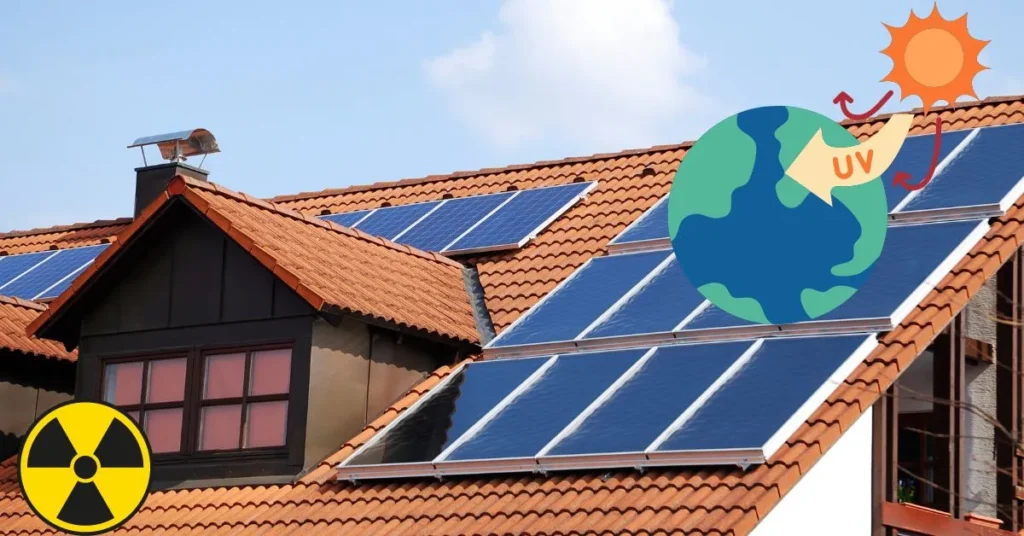
2. Infrared (IR) radiation
IR radiation is electromagnetic radiation. It has longer wavelengths than visible light. It is often perceived as heat. Solar panels absorb sunlight to make electricity. They emit some absorbed energy as IR radiation. IR radiation from solar panels is not harmful at typical levels. But it adds to the heat near solar installations.
3. Electromagnetic Fields (EMFs):
EMFs, or low-frequency electromagnetic radiation fields, are created by electrical equipment, such as solar panels, and the parts that go with them (wiring, inverters, etc.). When electricity travels via conductors, magnetic and electric fields are produced. The panel’s electrical design and its proximity to conductive materials are two factors. They affect how strong the electromagnetic fields are near solar panels.
Safety Standards and Regulations
Safety standards like IEC 61730 regulate how to make and install solar panels to reduce health concerns. Read my expert tips on solar installation. The guidelines limit radiation emissions. They ensure that panels have the least possible exposure. Solar energy deployment hinges on compliance with laws that protect public health.
2: Chemicals and Toxins
Materials Used in Solar Panels
Silicon dominates the production of solar panels among the various materials used. When panels contain silicon, it is usually harmless. Lead and cadmium, however, may also be present in some varieties of panels. These materials may be harmful to your health. Panels that malfunction or end up in the trash highlight this fact.
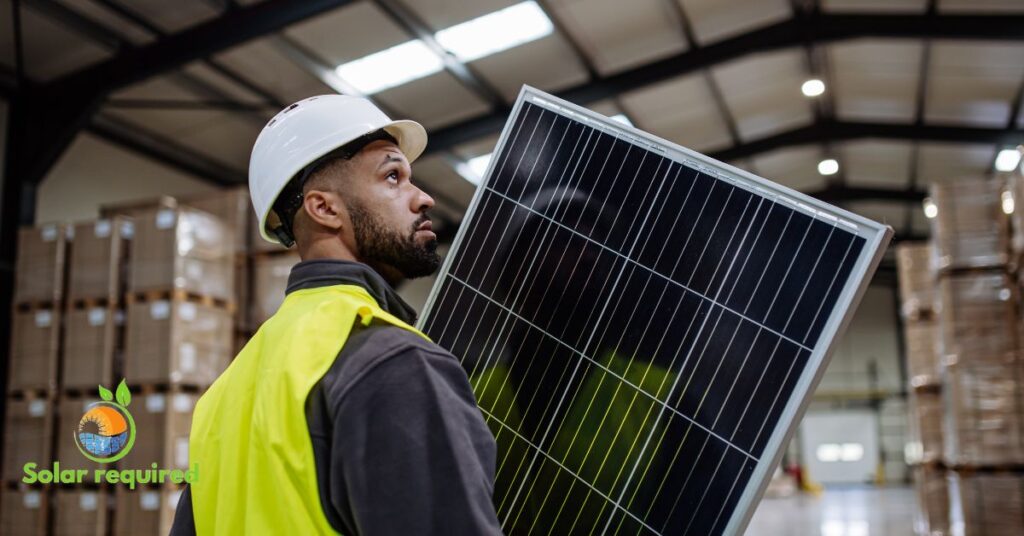
The materials can be harmful if eaten or inhaled. This is especially true during production or improper recycling. To reduce these dangers, you must manage and dispose of solar panels by the rules. They are environmental rules.
Manufacturing and Disposal
The production of solar panels has many steps. Each step may harm the environment. Solar cells often use chemicals. Their making use of a lot of energy. We must prevent the release of hazardous materials into the atmosphere. Proper disposal is essential.
Transforming worn-out solar panels into renewable resources reduces waste. It also recovers valuable resources and lessens harm to the environment. Also, recycling reduces health concerns. It does this by preventing leaks of hazardous materials into water and land. We can keep solar panels sustainable. We’ve been able to do this with effective recycling.
3: Electromagnetic Fields (EMFs)
Understanding EMFs
Electromagnetic fields, or EMFs, surround solar panels and other electrical devices. Solar panels and their parts produce EMFs. They are made by the electricity that passes through them.
Solar panels release electromagnetic fields (EMFs). These fields are usually at low levels. Current laws deem them safe. Studies are ongoing. They’ve aimed to assess the health impacts of long-term exposure to EMFs from solar panels.
Strategies of Mitigation
You can use many tactics to reduce the electromagnetic field from solar panels. One way to lower exposure levels is to keep a safe distance from panels. This is important when installing and using them, especially for long periods. Using shielding materials and following safety rules reduces dangers.
Solar panels operate within set safety limits. They do so when they get routine maintenance and inspections. By using these tactics, solar panels can keep making clean energy. They also put safety first and reduce health risks from electromagnetic fields.
4: Health Studies and Findings
Research on Health Impacts
Several studies have assessed the health impacts of solar panels. These studies investigate various factors, including:
Radiation exposure
Studies look at how much solar panels emit. They emit ultraviolet (UV), infrared (IR), and electromagnetic fields (EMFs). Infrared radiation creates heat. But UV radiation can harm the skin and eyes. Researchers are investigating EMFs for their possible effects on human health. These include electromagnetic hypersensitivity, even though they are typically weak near solar panels.
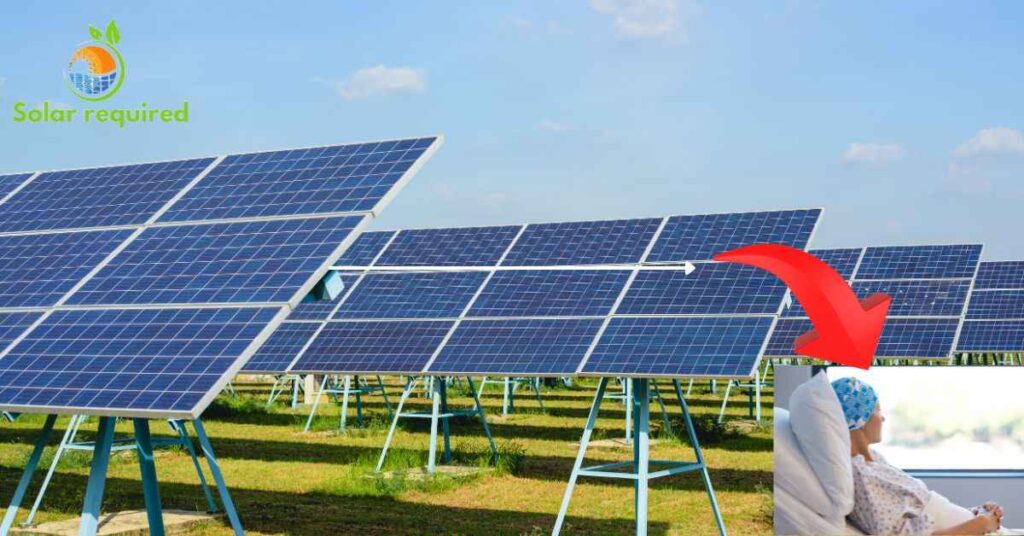
Exposure to chemicals
We scrutinize the health implications of solar panel materials. These materials include silicon, cadmium, and lead. Workers may touch these materials during production. They reach out when damaged panels are thrown away incorrectly. To reduce these dangers, proper handling and disposal procedures are essential.
Current understanding and ongoing research in the field
New studies show that well-installed solar panels are safe. Regulatory bodies set safety standards for radiation and materials. An example is the International Electrotechnical Commission (IEC). They ensure that panels meet safety requirements. Ongoing research continues to watch for long-term health effects. It also refines safety guidelines as needed.
5: Practical tips for minimizing risks
Procedures for Installation and Maintenance
Maintaining mistakes are less likely to jeopardize safety. This is the case when certified experts install solar panels. To reduce dangers during installation, experts adhere to industry norms and rules. Examples include fastening panels to withstand environmental conditions and guaranteeing electrical safety.
It needs routine maintenance. This includes checks for wear or damage to keep safety standards. Finding and fixing problems early keeps panels safe and effective. This proactive strategy ensures it for as long as they’ve lived.
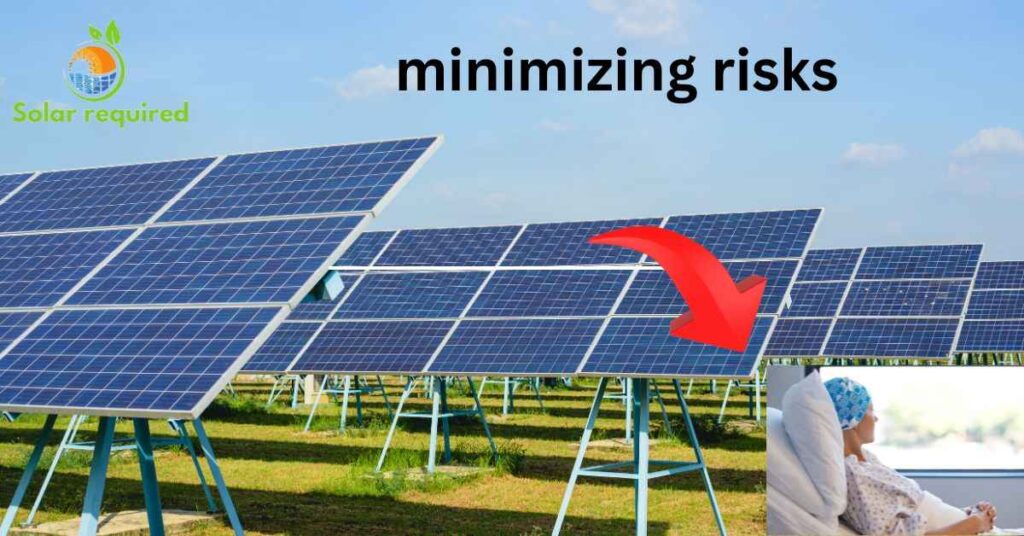
Measures for personal protection
When doing regular tasks, homeowners can cut the risk of exposure. They can do this by keeping a safe distance from panels. Solar panels typically emit low levels of electromagnetic fields (EMF). But, following the safety distances advised by professionals can further reduce exposure. Learning about risks and safety empowers homeowners. It lets them make informed decisions about their solar panels.
Related post: Nuclear Power vs Solar Power
FAQ
Do solar panels emit harmful radiation?
Solar panels emit minimal radiation, mainly from sunlight. The types of radiation they emit, like UV and IR, are low and generally not harmful.
Are there health risks from the materials in solar panels?
Some solar panels contain materials like cadmium and lead. These can be risky if panels are damaged, but proper handling and recycling reduce these risks.
Can EMFs from solar panels be harmful?
EMFs from solar panels are low and considered safe. Following safety guidelines during installation minimizes any potential risks.
What health effects might living near solar panels cause?
Living near solar panels is generally safe. EMFs are low, and radiation levels are within safety limits set by standards.
How can I ensure solar panels are safe at home?
Hire certified installers and maintain panels regularly. Keep a safe distance and follow safety advice for added protection.
Conclusion
In conclusion, concerns about the health effects of solar panels exist. But recent research shows that with proper installation and maintenance, these risks are small.
We’ve discussed the types of radiation from solar panels. They include UV, IR, and EMFs. International standards keep them at safe levels. Lead and cadmium are two materials in solar panels. They can be dangerous if not handled safely when made or disposed of. Following the proper protocols can reduce these hazards. They also ensure the environment’s security.
Solar panels emit a few electromagnetic fields (EMFs). Simple precautions, like proper installation and upkeep, can also reduce any risks.
Researchers are still studying the health effects. But, available data shows that solar panels are safe. They are safe as long as safety precautions are taken.
We can use solar energy’s benefits. We can also reduce health problems. We can do this by focusing on safe installation, regular maintenance, and staying informed. By working together, we can promote a clean, energy-powered, sustainable future.
Thanks for reading!
